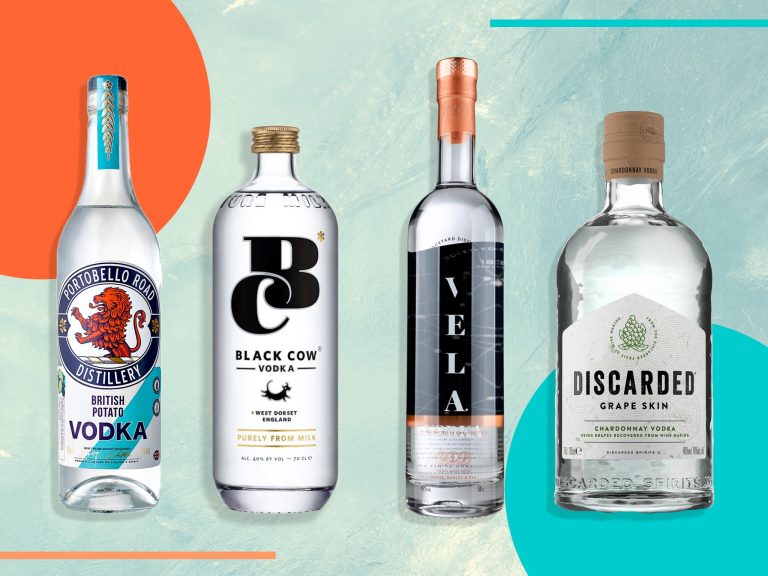Top 9 Best Knife Steels: Ultimate Guide to Durability, Sharpness, and Performance
Choosing the right knife steel can make all the difference in your culinary or outdoor adventures. With so many options available, it’s easy to feel overwhelmed. Whether you’re a professional chef, an avid hunter, or just love cooking at home, understanding the best knife steels can elevate your experience.
The Basics of Knife Steel Properties
Understanding knife steel properties helps you choose the right knife for your needs. Let’s break down the key traits to look for.
Hardness and Toughness: Key Traits in Knife Performance
Hardness and toughness are crucial for a knife’s effectiveness. Hardness measures a knife’s resistance to deformation, typically determined via the Rockwell scale. Toughness, on the other hand, indicates how well the knife resists chipping and breaking under stress. High-carbon steels like CPM-S30V offer excellent hardness, making them ideal for precision tasks. However, they may lack the toughness needed for rigorous chopping, which is where steels like 5160 excel.
Corrosion Resistance: Why It Matters
Corrosion resistance determines how well your knife withstands rust and stains. Stainless steels, such as VG-10 and 440C, contain chromium, enhancing corrosion resistance. This trait is vital for knives exposed to humid environments or used in food preparation, preventing rust buildup and prolonging the knife’s life. On the flip side, knives with high carbon content, like 1095, are prone to rust but often provide superior edge retention.
Edge Retention: What Keeps a Knife Sharp
Edge retention measures a knife’s ability to stay sharp over time. Steels like CPM-20CV and ZDP-189 are renowned for excellent edge retention thanks to their high hardness and fine grain structure. This means less frequent sharpening, crucial for consistent performance in professional kitchens or demanding outdoor activities. However, these steels can be harder to sharpen when dull, requiring more effort or specialized tools.
Focusing on these properties helps you select knives that suit your specific needs, whether you’re slicing vegetables or cutting through ropes.
Carbon Steel: Traditional Choice for Knife Makers
Carbon steel is revered among knife makers for its durability and reliable performance. Its simplicity and effectiveness make it a staple in both professional and amateur settings.
Top Advantage: Easy Sharpening
Carbon steel’s primary advantage is its easy sharpening. You can effortlessly hone a razor-sharp edge, making it ideal for tasks requiring fine precision. For instance, culinary professionals often prefer carbon steel knives because they can be quickly and efficiently resharpened during busy kitchen shifts.
Consideration: Prone to Rust without Proper Care
Despite its benefits, carbon steel is prone to rust if not cared for properly. To prevent corrosion, you must regularly oil the blade and store it in a dry environment. Neglecting this can result in rust spots and decreased performance. Therefore, maintaining carbon steel knives requires a dedicated routine to keep them in peak condition.
Stainless Steel: Popular for Its Rust Resistance
Stainless steel is a favorite among knife enthusiasts due to its excellent rust resistance. This makes it an ideal choice for those who want low-maintenance yet reliable blades.
Containing Chromium: The Secret to Corrosion Resistance
Chromium is the key to stainless steel’s corrosion resistance. A knife must contain at least 10.5% chromium to be classified as stainless steel. When exposed to oxygen, chromium forms a thin layer of chromium oxide on the steel surface. This layer acts as a barrier, preventing moisture and other elements from causing rust. You’ll find this quality particularly valuable in humid or wet environments where knives are more prone to corrosion.
Varieties and Uses in Kitchen Knives
Several stainless steel varieties are popular in kitchen knives.
- 420HC: Known for its balance of hardness and corrosion resistance, it’s easy to sharpen.
- 440C: Offers excellent edge retention and high wear resistance, making it suitable for professional kitchen knives.
- AUS-8: Combines toughness with resistance to rust, ideal for everyday kitchen use.
- VG-10: Preferred by many chefs, it holds an edge well and is resistant to rust.
- X50CrMoV15: Common in high-quality German knives, it’s durable and resists stains and rust.
These varieties make stainless steel a versatile choice for all kitchen tasks, from slicing vegetables to cutting through tough meats.
Tool Steel: High Performance in Durability
Tool steel offers unmatched durability and toughness, making it ideal for demanding tasks. This steel is renowned for its ability to withstand wear and tear, ensuring long-lasting performance.
Enhanced Wear Resistance for Professional Use
Tool steel excels in wear resistance, crucial for professional applications. Because of its high carbon and alloy contents, it can endure repetitive stress and maintain a sharp edge. For instance, D2 steel, often used in industrial knives, is praised for its ability to resist abrasion while maintaining edge retention. Professionals rely on tool steel for tasks requiring consistent performance without frequent sharpening.
Common Types Used in Specialized Tools
Several types of tool steel stand out for specialized applications. A2 steel, often used in woodworking tools, provides a balance of toughness and wear resistance, making it suitable for chisels and plane irons. M2 high-speed steel is another popular choice, frequently found in cutting tools like drill bits due to its ability to retain hardness even at high temperatures. Another notable mention is O1 steel, known for its ease of sharpening, making it a favorite for custom knife makers. These variants of tool steel cater to specific needs, ensuring optimal performance for each application.
Tool steel’s unique properties make it indispensable for professionals who require reliable, long-lasting tools capable of handling rigorous tasks.
Damascus Steel: Combining Aesthetics with Functionality
The Art of Layered Steel: Visual and Physical Properties
Experience the enchantment of Damascus steel, famous for its striking water-like patterns and exceptional strength. Created by forging together multiple layers of steel, the result is a blade with unique swirls, providing both beauty and enhanced performance. Enjoy the superior edge retention and durability it offers, making it a sought-after choice for collectors and professional chefs alike. Remember that Damascus steel isn’t just about looks; its layered construction provides a hard, sharp edge while maintaining flexibility.
Applications in Custom and High-End Knives
Discover the allure of Damascus steel in custom and luxury knife markets. Renowned knife makers frequently choose this steel for bespoke and limited-edition knives, ensuring each piece is both functional and visually stunning. Whether it’s in a high-end chef’s knife or an artisanal hunting knife, the combination of durability and aesthetics makes it a favorite among enthusiasts. Appreciate the craftsmanship and precision that go into these blades, making them not only tools but also works of art.
Ceramics: An Innovative Knife Steel Alternative
Ceramics have emerged as a noteworthy alternative to traditional knife steels. These blades offer unique advantages while also presenting distinct challenges.
Benefits: Exceptional Hardness and Maintenance Ease
Ceramic knives excel in hardness. They’re incredibly resistant to wear, ensuring your ceramic blade stays sharp much longer than steel. This exceptional hardness also means minimal maintenance, as ceramic knives don’t rust or tarnish. You can focus more on cooking and less on upkeep.
Limitations: Brittleness and Specialized Sharpening Needs
Ceramics come with their own set of challenges. They’re brittle, so they can crack or chip easily if dropped or used on hard surfaces. Sharpening ceramic blades requires specialized tools and skills, making it inconvenient compared to traditional steels. You’ll need to weigh these factors before choosing a ceramic knife for your kitchen.
Exotic Alloys: The New Frontier in Knife Steel
Incorporation of Rare Elements for Unique Properties
Exotic alloys are revolutionizing knife making by incorporating rare elements to enhance performance. Adding cobalt improves hardness and edge retention, making knives sharper for longer. Using niobium increases toughness, allowing the blade to withstand severe conditions without chipping. Integrating vanadium boosts wear resistance, ensuring the knife retains its sharpness after prolonged use. These rare elements create steel with unmatched qualities ideal for high-performance cutting tools.
Examples and Emerging Trends in Knife Making
Exotic alloys like CPM Rex 121 and LC200N are gaining popularity among knife enthusiasts. CPM Rex 121 includes high levels of tungsten and vanadium, offering extreme hardness and wear resistance. LC200N, also known as Z-Finit, incorporates nitrogen to provide excellent corrosion resistance and toughness, making it suitable for marine environments. Trends in knife making focus on developing steels with combinations of elements to target specific needs, such as high durability or rust resistance. The emergence of these alloys is setting new standards in the industry, pushing the boundaries of knife performance and longevity.
Conclusion: Choosing Your Ideal Knife Steel
Selecting the right knife steel depends on your specific needs and preferences. Whether you prioritize hardness, toughness, corrosion resistance, or edge retention, there’s a steel type that fits the bill. From the durability of carbon steel to the rust resistance of stainless steel, each has its unique benefits.
Tool steels offer exceptional durability and toughness, while Damascus steel combines strength with visual appeal. For those seeking innovation, ceramic knives provide unmatched hardness, and exotic alloys like CPM Rex 121 and LC200N push the boundaries of performance.
Understanding these options helps you make an informed decision, ensuring your knife performs optimally for your intended use.






